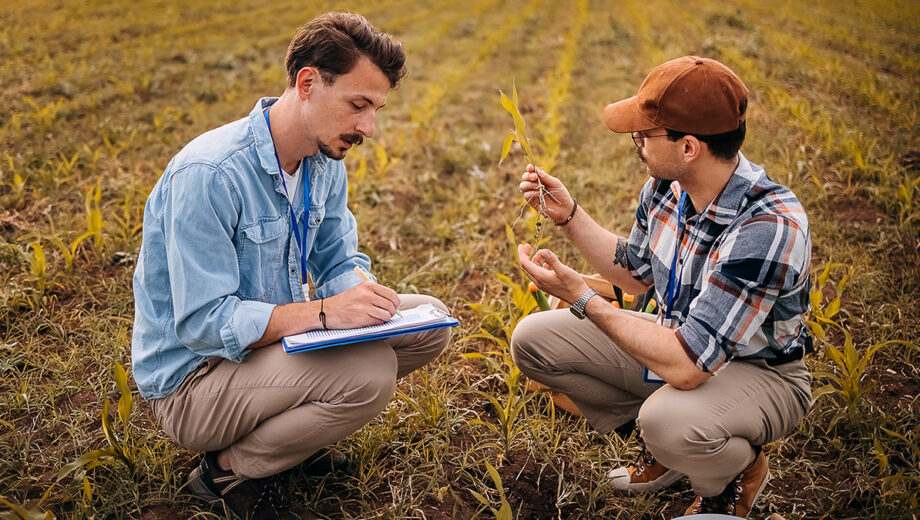
Beyond the field: How trust, incentives, and networks drive regenerative agriculture
Over five years of collaborative work, Midwest Row Crop Collaborative and our partners uncovered powerful lessons about what fuels and what hinders the widespread adoption of regenerative agriculture.
The Midwest Row Crop Collaborative (MRCC), with support from HSBC Bank USA, set out to test big ideas for accelerating regenerative agriculture in the Mississippi River Basin. Through partnerships with Practical Farmers of Iowa (PFI), Precision Conservation Management (PCM), and The Nature Conservancy (TNC), MRCC engaged in four place-based pilot projects that served as real-world laboratories for these big ideas. These pilots tested not only practices on the ground but also how change can spread across systems—by aligning supply chains, advancing shared metrics, building trust, and investing in farmers.
Implementing partners used different approaches and worked within unique geographic and cultural contexts. Several cross-cutting themes emerged that helped us understand what drives participation, what creates value for farmers and supply chains, and what still needs refinement. These lessons deepened our understanding of the enabling conditions for systems change and are shaping the future of MRCC’s work.
Jaycie Thomsen, Midwest Row Crop Collaborative associate director, shared, “The learning from these past five years reinforces that progress in regenerative agriculture isn’t just about practices—it’s about partnerships. The depth of trust, the power of networks, and the clarity of shared outcomes have been the foundation for driving action and investment in our sourcing regions.”
Below, we share key insights from our five years of implementation within the frame of three of our systems change pathways: conservation finance and incentives, de-risking practice adoption, and agricultural network engagement.
Conservation finance and incentives
To scale regenerative practice adoption, farmers must be compensated in ways that reflect the real risks they assume in taking up new practices on their operations. Across each project, we tested incentive models that provided direct payments to farmers and supported conservation practice adoption.
Key insights
- Market-based premiums and performance-based incentives can drive adoption, but they require consistent funding and supply chain coordination.
- Flexible incentive models are effective. Farmers valued incentives that rewarded either improvement or maintenance of high-quality conservation practices. Illinois’ STAR incentive tiers allowed recognition of both new adopters and long-time conservationists.
- Cost-share programs blending public and private funding created more stable, long-term support structures for farmers, implementing partners, and supply chain partners. This is a promising approach that also requires significant administrative capacity.
- Producers prefer per-acre payments over per-bushel incentives to avoid yield-dependent compensation risks.
De-risking practice adoption
Regenerative practice adoption is a risk for farmers—economically, operationally, and culturally. Incentives to alleviate financial risk associated with practice adoption are one part of the risk reduction equation. Our partners emphasized the importance of tailored technical assistance and strong relationships when equipping farmers to make informed and confident decisions.
Key insights
- Farmers need clear economic insights to assess the business case for conservation practices. For example, PCM’s Farmer Portal offers financial and environmental insights tailored to specific practices, helping farmers make informed decisions and building credibility with supply chain partners.
- Localized technical assistance—delivered through conservation professionals with regional expertise—increases program adoption and long-term viability. Efforts to reduce turnover and recruit well-connected technical staff enhance program stability and credibility.
- Streamlined, easy-to-navigate conservation programs increase adoption and reduce perceived risk. When conservation programs are clear, flexible, and minimize administrative burden, producers are more likely to engage and stay involved. In contrast, complex reporting requirements or mandatory multi-year commitments often lead to a significant drop-off after initial enrollment.
Agricultural network engagement
Successful programs work through trusted relationships and within regional networks of influence. In each of our pilots, farmers responded most positively when program outreach and delivery came from people they already knew—fellow farmers, agronomists, local conservation professionals, or grain merchandisers. These networks serve as essential connectors, helping translate technical information into locally relevant, actionable insights.
Key insights
- Farmer-to-farmer engagement is a powerful driver of practice adoption. Peer learning, testimonials, and field demonstrations create trusted spaces for knowledge-sharing.
- Tailored communication that reflects the values, goals, and readiness of the farmers in the region increases recruitment and retention. Strategic community engagement approaches followed by in-person outreach was the gold star method identified through each of the projects. We learned the power of thoughtful, data-driven engagement through our Reach Farmers Faster case study in Illinois, Iowa, and Nebraska.
- Building and sustaining relationships requires time, trust, and administrative capacity. Multi-stakeholder programs depend on thoughtful coordination and strategic communication—not just with farmers, but across the entire value chain.
Looking ahead
The lessons from these projects are already shaping the next phase of MRCC’s work—from launching a MRCC Regenerative Agriculture Leadership Cohort to building shared principles for sustainable biofuels feedstock procurement. We’ve seen firsthand that durable systems change takes more than good intentions—it takes time, partnership, and a willingness to test and learn.
In Part 3 of this blog series, we’ll explore how this work is informing our research, programming, and priorities for 2025 and beyond. Contact Jaycie Thomsen for a conversation about joining our work.